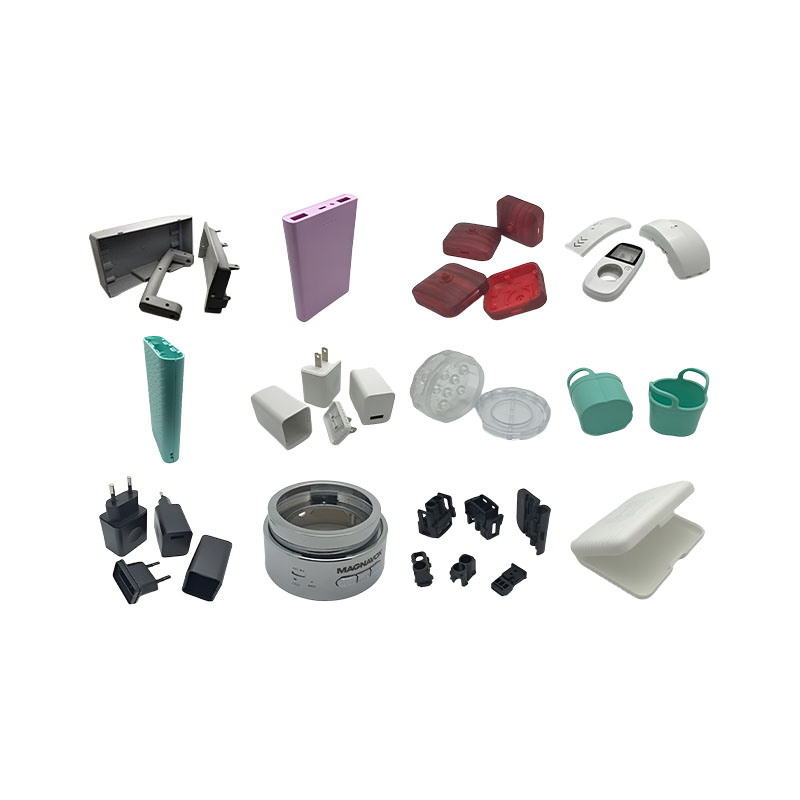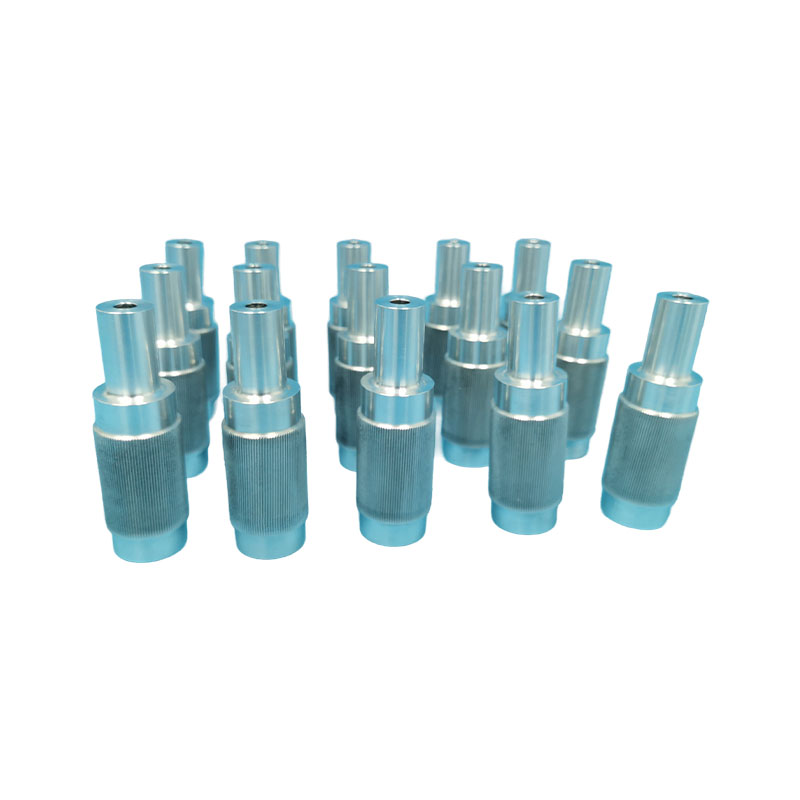How to achieve a mirror-like finish when turning aluminum CNC turning?
Release Time : 2025-10-22
In modern precision manufacturing, aluminum alloys are widely used in industries such as aerospace, automotive parts, consumer electronics, and medical devices due to their low density, high strength, excellent thermal conductivity, and ease of machining. In these high-end applications, aluminum CNC turning not only requires dimensional precision but also extremely high surface quality—a "mirror-like finish" has become a standard appearance characteristic of many products.
1. Selecting the Right Aluminum Alloy
Not all aluminum alloys are suitable for mirror turning. It is the preferred choice for achieving high surface quality. It contains an appropriate amount of magnesium and silicon, resulting in a uniform microstructure, low build-up edge during machining, and a high surface finish. In contrast, 2024, which has a high copper content, or 7075, which has extremely high strength, is more susceptible to hardening and tool sticking during cutting, making it less conducive to achieving a mirror-like finish. Therefore, if the product design allows, 6061 or a forged aluminum alloy specifically designed for precision machining is the preferred choice as the first step to achieving a mirror-like finish.
2. Precisely matching tool material and geometry
The tool is a key factor in determining surface quality. For aluminum CNC turning, polycrystalline diamond (PCD) tools or ultra-fine-grain carbide-coated tools are recommended. PCD tools offer exceptional hardness and wear resistance, maintaining a sharp cutting edge for extended periods. They are particularly well-suited for high-speed cutting and long-duration continuous machining, effectively preventing surface scratches caused by tool wear. Furthermore, tool geometry is crucial. A design with a large rake angle and a small inclination angle should be selected to reduce cutting forces and friction, allowing for smooth chip evacuation and preventing scratches on the machined surface. Furthermore, using radiused inserts can significantly improve surface roughness. A wiper edge with a straight or slightly curved edge in the feed direction can achieve a "scraping" effect in a single pass, significantly reducing Ra values to near-mirror finishes.
3. Optimizing Cutting Parameters for High-Speed Finishing
The key to achieving a mirror finish lies in a "high-speed, low-depth-of-cut, low-feed" finishing strategy. High-speed cutting not only improves surface quality but also effectively prevents the formation of built-up edge, a major cause of darkening and rough surfaces on aluminum alloys.
4. Cooling and Lubrication: Dry Cutting or Spray?
Aluminum alloys conduct heat quickly, and heat generated during machining is easily transferred to the workpiece, causing thermal deformation. Therefore, a suitable cooling method is essential. While traditional emulsion cooling is effective, it may leave residual oil residue, affecting surface gloss. Currently, minimal lubrication or cold air spray cooling are the preferred options for high-end mirror finishing. They effectively reduce temperature while avoiding residual liquid, maintaining a clean and glossy workpiece. For simple parts, complete dry cutting can even be used, combined with the high wear resistance of PCD tools, achieving a "contamination-free" mirror finish.
5. Vibration Reduction and Clamping Stability
Vibration is an invisible killer that causes surface marks and gloss loss. To avoid vibration, ensure good machine tool spindle accuracy, sufficient toolholder rigidity, and minimize overhang. Furthermore, the workpiece must be securely clamped. It is recommended to use a soft-jaw chuck and perform precision boring to ensure the clamping surface is concentric with the center of rotation to reduce play. For slender shafts, a steady rest or steady rest can be added to improve overall rigidity.
Achieving a "mirror-like" finish on aluminum CNC turning isn't the result of a single factor, but rather a systematic synergy of material selection, tool configuration, parameter optimization, cooling methods, and clamping techniques. In practice, it's recommended to continuously adjust parameters through trial cuts and record the optimal process combination. With technological advancements, combined with online detection and adaptive control, aluminum alloy mirror turning will become even more intelligent and efficient in the future.
1. Selecting the Right Aluminum Alloy
Not all aluminum alloys are suitable for mirror turning. It is the preferred choice for achieving high surface quality. It contains an appropriate amount of magnesium and silicon, resulting in a uniform microstructure, low build-up edge during machining, and a high surface finish. In contrast, 2024, which has a high copper content, or 7075, which has extremely high strength, is more susceptible to hardening and tool sticking during cutting, making it less conducive to achieving a mirror-like finish. Therefore, if the product design allows, 6061 or a forged aluminum alloy specifically designed for precision machining is the preferred choice as the first step to achieving a mirror-like finish.
2. Precisely matching tool material and geometry
The tool is a key factor in determining surface quality. For aluminum CNC turning, polycrystalline diamond (PCD) tools or ultra-fine-grain carbide-coated tools are recommended. PCD tools offer exceptional hardness and wear resistance, maintaining a sharp cutting edge for extended periods. They are particularly well-suited for high-speed cutting and long-duration continuous machining, effectively preventing surface scratches caused by tool wear. Furthermore, tool geometry is crucial. A design with a large rake angle and a small inclination angle should be selected to reduce cutting forces and friction, allowing for smooth chip evacuation and preventing scratches on the machined surface. Furthermore, using radiused inserts can significantly improve surface roughness. A wiper edge with a straight or slightly curved edge in the feed direction can achieve a "scraping" effect in a single pass, significantly reducing Ra values to near-mirror finishes.
3. Optimizing Cutting Parameters for High-Speed Finishing
The key to achieving a mirror finish lies in a "high-speed, low-depth-of-cut, low-feed" finishing strategy. High-speed cutting not only improves surface quality but also effectively prevents the formation of built-up edge, a major cause of darkening and rough surfaces on aluminum alloys.
4. Cooling and Lubrication: Dry Cutting or Spray?
Aluminum alloys conduct heat quickly, and heat generated during machining is easily transferred to the workpiece, causing thermal deformation. Therefore, a suitable cooling method is essential. While traditional emulsion cooling is effective, it may leave residual oil residue, affecting surface gloss. Currently, minimal lubrication or cold air spray cooling are the preferred options for high-end mirror finishing. They effectively reduce temperature while avoiding residual liquid, maintaining a clean and glossy workpiece. For simple parts, complete dry cutting can even be used, combined with the high wear resistance of PCD tools, achieving a "contamination-free" mirror finish.
5. Vibration Reduction and Clamping Stability
Vibration is an invisible killer that causes surface marks and gloss loss. To avoid vibration, ensure good machine tool spindle accuracy, sufficient toolholder rigidity, and minimize overhang. Furthermore, the workpiece must be securely clamped. It is recommended to use a soft-jaw chuck and perform precision boring to ensure the clamping surface is concentric with the center of rotation to reduce play. For slender shafts, a steady rest or steady rest can be added to improve overall rigidity.
Achieving a "mirror-like" finish on aluminum CNC turning isn't the result of a single factor, but rather a systematic synergy of material selection, tool configuration, parameter optimization, cooling methods, and clamping techniques. In practice, it's recommended to continuously adjust parameters through trial cuts and record the optimal process combination. With technological advancements, combined with online detection and adaptive control, aluminum alloy mirror turning will become even more intelligent and efficient in the future.







